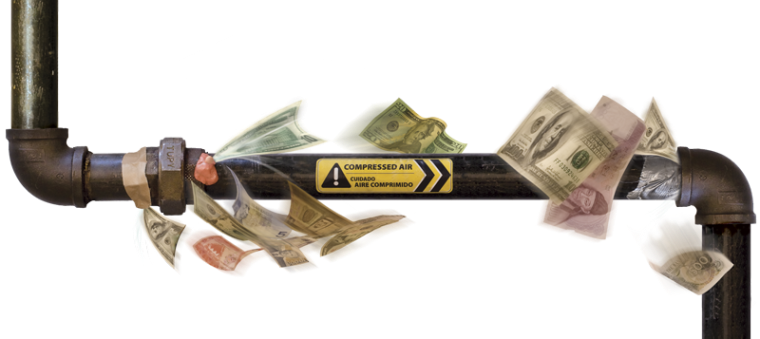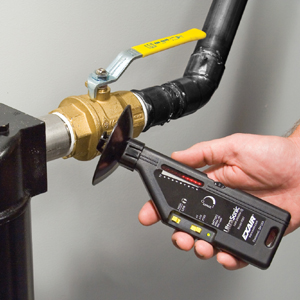It is no surprise that compressed air can be a costly utility for industrial facilities. It can easily chip away at the bottom line finances if used carelessly and without planning. This is one of the leading reasons we have educated continuously on how to ensure this vital utility is used with safety and conservation in mind. If we have installed all engineered solutions at the point of use throughout a facility, there is still more to be saved. One of the easiest things to do with a utility system inside of a facility is to leave it unchecked and undocumented until something goes wrong. This does not have to be the scenario and in fact, starting a leak detection program in a facility can help to save up to 30% of the compressed air generated.

That’s right, up to 30% of the compressed air being generated in an industrial facility can be exhausting out to ambient through leaks that run rampant throughout the facility. When the point of use production is still working fine, then these sorts of leaks go unnoticed. Another common occurrence goes something like this example: Maybe there is a leak bad enough to drop the packaging line pressure slightly, this may get fixed by bumping up a pressure regulator, production is back up and it is never thought of again. In all actuality this is affecting the production more and more with each leak.
The leaks add additional load onto the supply side. The compressor has to generate more air, the dryer needs to process more air, the auto drains dump more moisture, it all ads up to additional wear and tear also known as false load. All of this additional load on the system can add more maintenance which if left undone can result in system shut downs. One way to begin to eliminate this false load is to deploy a leak detection program. The steps are fairly easy.
Similar to our 6 Steps to Compressed Air Optimization, you start with a baseline of how much air the system is seeing and operating pressures. This begins the documentation process which is critical to the success of the program. Next, acquire an ultrasonic leak detector (ULD) and a layout of your compressed air system piping. Utilizing the ULD, test all compressed air piping along with equipment, and tag each leak that is detected. Next, begin to repair all of the tagged leaks and document the amount of compressed air savings with each repair. This again, is more documentation which leads to giving a quantitative value to the return on investment of the program. Lastly, schedule a follow up scan that recurs on a pre-determined basis to prevent the system from returning to it’s original leaky state.

If you would like to discuss starting a leak detection program in your facility or have questions about the ULD or any point of use compressed air product, please reach out to an Application Engineer today.
Brian Farno
Application Engineer
BrianFarno@EXAIR.com
@EXAIR_BF